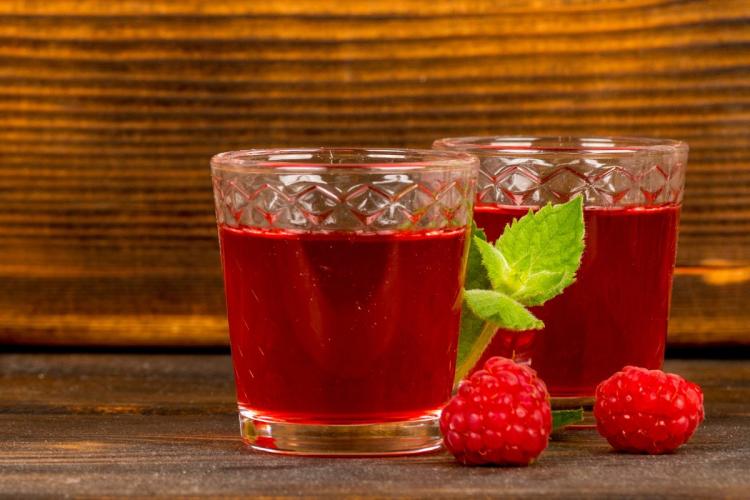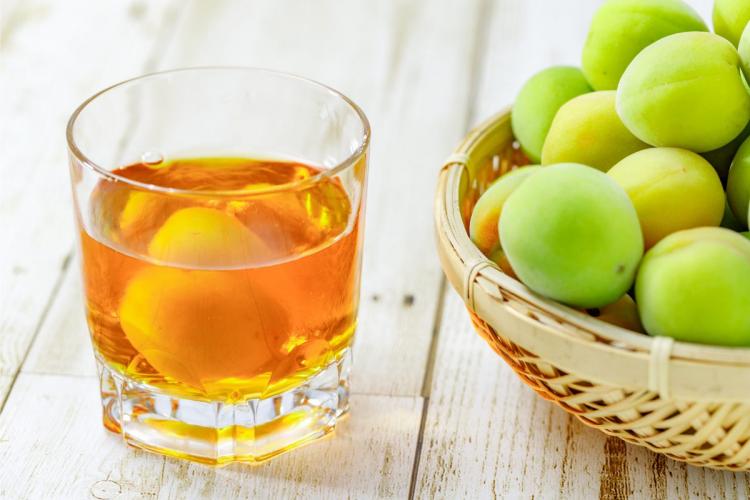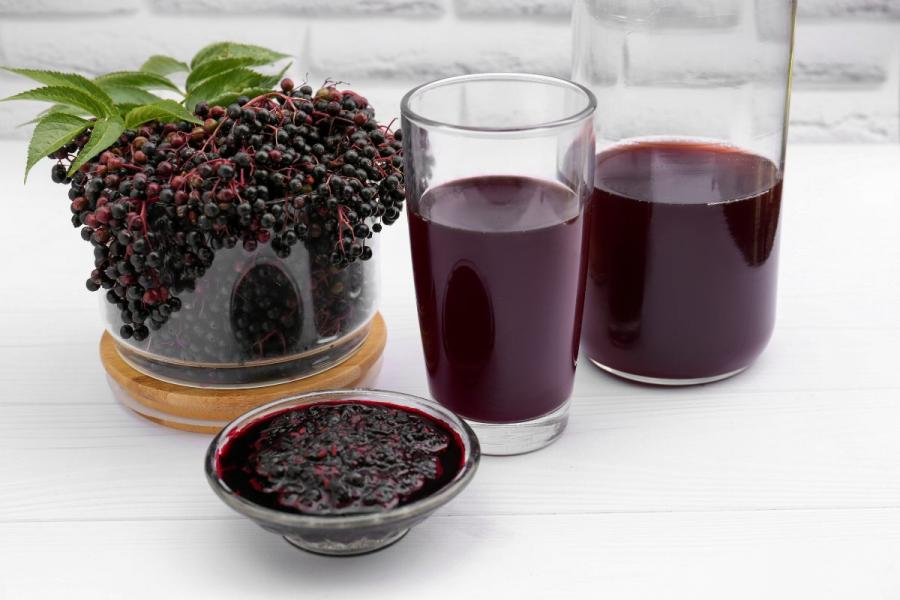Guide to fruit wine
A guide to fruit wine including tasting notes, flavors, and food pairings.
Are you ready to embark on a flavorful journey that transcends the traditional world of grape wine? Fruit wine offers a refreshing alternative, with diverse tasting notes and flavors, perfect for any wine enthusiast. Let’s explore the world of fruit wines, their unique characteristics, ideal food pairings, and tips to enhance your tasting experience.
Fruit wines
- Fruit wine is a fermented beverage made from fruits other than grapes, providing an array of flavors.
- Different types of fruit wines offer distinct flavor profiles and can be paired with various dishes for a complementary culinary experience.
- Following the proper tips for serving temperature, glassware, and storage will maximize enjoyment when consuming fruit wines produced by popular producers in North America, Europe & Asia.
What is fruit wine?
Fruit wine is a delightful and versatile beverage produced from the fermentation of fruits other than grapes, resulting in a variety of flavors and styles that cater to a wide range of wine tastes. Whether you’re a fan of the light bodied red wine or the bold and robust flavors, there’s a fruit wine for you.
Dive into the different types of fruit wines and the fascinating process of how they are made.
Types of fruit wines
Fruit wines encompass an array of flavors, including black fruit flavors and red fruit flavors such as:
- Blackberry
- Blueberry
- Blackcurrant
- Redcurrant
- Cranberry
- Elderberry
- Gooseberry
Some of these wines may exhibit green apple fruit aromas, a characteristic that contributes to the wine’s aroma. These wines showcase the rich, fruity flavors and vibrant colors that make them a popular choice among wine enthusiasts.
Tropical fruit wines, on the other hand, feature fruits such as mulberry, orange, peach, and strawberry, offering distinct fruit flavors and aromas that transport you to an exotic paradise. Stone fruit wines, including blueberry, cherry, and citrus, provide a unique wine flavor profile that sets them apart from traditional grape wines. Each type of fruit wine offers its unique characteristics, allowing you to discover new and exciting flavors.
How fruit wine is nade
The production of fruit wine begins with the preparation of the fruit, which involves washing and crushing the fruit to extract the juice, followed by the fermentation process. This process is similar to the fermentation of grape wines, such as Cabernet Sauvignon. Yeast is added to the fruit juice, consuming the sugar and releasing carbon dioxide and alcohol, contributing to the wine’s aroma and flavor profile.
Fruit wines can range from light bodied red wine styles to more robust and full-bodied options, depending on factors such as the type of fruit and the fermentation process. After fermentation, the wine is aged and bottled, typically for one to two years.
The final steps include filtering and clarifying the wine, as well as incorporating sulfites to preserve the wine and introducing other components to improve the flavor.
Tasting notes and flavors in fruit wines
Venturing into the realm of fruit wines, you’ll encounter a diverse array of tasting notes and flavors, from sweet and fruity to tart and complex. Exploring the different categories of fruit wines, such as berry, tropical, and stone fruit wines, will reveal unique flavor profiles and provide an exciting wine tasting experience.
Fruit wines are a great way for wine drinkers to explore the world of wine and discover new flavors.
Berry wines
Berry wines, such as raspberry, blackberry, and blueberry, offer rich, fruity flavors that are perfect for those seeking a taste of the bountiful harvest. The tasting notes of berry wines may comprise flavors of:
- cranberry
- cherry
- strawberry
- raspberry
- black currant
- blackberry
- plum
- jam
This provides a delightful sensory experience for your taste buds.
When it comes to food pairings, berry wines can be complemented by desserts, cheeses, and lighter meats, offering an exquisite balance of flavors. To fully appreciate their vibrant aromas, serve berry wines chilled and in a glass that allows the aromas to be fully appreciated, while storing them in a cool, dark environment.
Tropical fruit wines
For those craving a taste of exotic, tropical fruit wines, like pineapple, mango, and passion fruit, provide refreshing flavors and aromas that transport you to a sun-kissed paradise. The tasting notes of tropical fruit wines can include aromas and flavors of pineapple, papaya, passion fruit, quince, peach, mango, melon, and citrus, along with a citric finish.
Tropical fruit wines pair beautifully with spicy dishes, grilled seafood, and tropical fruits, making them the perfect addition to your next tropical themed dinner party. For optimal enjoyment, serve tropical fruit wines chilled and experiment with various glassware, while storing them for up to twelve months.
Stone fruit wines
Stone fruit wines, made from fruits like peach, apricot, and cherry, showcase delicate, juicy flavors and subtle sweetness, making them a delightful option for those seeking a more nuanced flavor profile. The tasting notes of stone fruit wines generally consist of stone fruit aromas, such as:
- Ripe peach
- Apricot
- Tangerine
- Plum
- Nectarine
- Citrus
- Floral notes
Ideal food pairings for stone fruit wines include light dishes, such as salads, grilled fish, and white meats, as well as desserts like fruit tarts and custards. To savor the delicate flavors of these wines, serve them at a slightly cool temperature, in a white wine glass, and store them in a cool, dark environment, consuming within one year of acquisition.
Food pairings for fruit wines
The art of food pairings for fruit wines depends on their flavor profiles, allowing you to create an exquisite dining experience that complements and enhances the flavors of both the wine and the dish. From light and refreshing fruit wines paired with salads and seafood to bold and robust fruit wines complementing rich, savory dishes, discovering the perfect food pairings will elevate your fruit wine experience.
When pairing food with fruit wines, it is important to consider the fruit flavor profile of the wine.
Light and refreshing fruit wines
Light and refreshing fruit wines, such as those crafted from apples, pears, and berries, are characterized by their low alcohol content and crisp, refreshing flavors. These wines, including sparkling wines, are an excellent accompaniment to salads, seafood, and light appetizers, enhancing the flavors of the dish and providing a delightful culinary experience.
Some popular varieties of light and refreshing fruit white wines include:
- Pinot Gris
- Riesling
- Gewürztraminer
- Moscato
Each offering a distinct flavor profile that complements a wide range of dishes. Explore the myriad of light and refreshing fruit wines available and discover your perfect food pairing.
Bold and robust fruit wines
Bold and robust fruit wines, such as those crafted from apples, cherries, and plums, are full-bodied, high tannin wines that are typically aged in oak barrels, imparting a rich, oaky flavor. These wines are best complemented by rich, savory dishes, such as grilled meats, stews, and strong cheeses, providing a harmonious balance of flavors that will satisfy your taste buds.
The most exemplary types of bold and robust fruit wines are those crafted from apples, cherries, and plums, which possess a naturally robust flavor further accentuated by oak aging. Renowned producers and regions for bold and robust fruit wines include those in North America, Europe, and Asia, each offering unique styles and flavors to suit your palate.
Tips for enjoying fruit wines
To fully appreciate the diverse flavors and aromas of fruit wines, it’s essential to consider factors such as serving temperature, glassware, and storage and aging requirements.
By following these tips, you’ll be able to enhance your fruit wine experience and savor every sip.
Serving temperature
The serving temperature of fruit wines can significantly affect their taste and aroma, making it crucial to serve them at the optimal temperature range of 45-55 degrees Fahrenheit. Lighter wines are best served chilled, as the cooler temperature enhances their crisp, refreshing qualities, while bolder wines are better served at room temperature, allowing their robust flavors to shine.
Understanding the impact of serving temperature on the taste and aroma of your fruit wines will enable you to provide an exceptional wine tasting experience for yourself and your guests. Experiment with different serving temperatures to find the perfect balance for each type of fruit wine in your collection.
Glassware
The glassware you choose for your fruit wine can significantly enhance your tasting experience, as different shapes and sizes are designed to highlight specific flavors and aromas. For example, the Aroma Collector Wine Glass, also known as Burgundy Glasses, is designed to capture the aromas of lighter-bodied red wines like Pinot Noir.
When selecting glassware for your fruit wines, consider stemmed glasses, tulip glasses, and flutes, each designed to showcase the unique characteristics of different fruit wines. By choosing the appropriate glassware, you’ll be able to fully appreciate the diverse flavors and aromas that fruit wines have to offer.
Storage and aging
Proper storage and aging of fruit wines ensure optimal taste and quality, allowing you to enjoy them at their best. Some guidelines for optimal storage and aging of fruit wines include:
- Maintaining consistent temperatures and humidity
- Reducing light exposure
- Storing bottles horizontally
- Keeping the temperature at 60°F or lower
Most fruit wines are best enjoyed within a few years of production, with homemade fruit wines generally recommended to be consumed within five years. By understanding the storage and aging requirements of your fruit wines, you’ll be able to preserve their quality and savor their flavors at their peak.
Popular fruit wine producers and regions
Fruit wine production is popular in various regions worldwide, with North America, Europe, and Asia each offering unique styles and flavors that cater to a diverse range of tastes.
Discover renowned fruit wine producers and regions, and explore the diverse world of fruit wines.
North America
North American fruit wine producers, such as:
- Fabbioli Cellars
- Fainting Goat Vineyards & Winery
- FernCrest Winery
- Finnriver Farm and Cidery
- Fiore
Our winery focuses on local fruits like berries and apples to create diverse and flavorful wines, including our unique Cabernet Sauvignon. These wines showcase the rich, natural flavors of the region and provide a refreshing alternative to traditional grape wines.
With an array of fruit wines to choose from, North American producers offer something for every palate, whether you prefer light and refreshing styles or bold and robust flavors. Pair these wines with a variety of dishes, including salads, grilled meats, and desserts, to enhance your culinary experience and explore the unique flavors of North American fruit wines.
Europe
European fruit wine production includes traditional styles like elderflower and sloe wines, showcasing the regional fruits and flavors that have been enjoyed for centuries. These wines offer a taste of European history and culture, providing an authentic and enjoyable experience for wine enthusiasts.
Experiment with European fruit wines, such as Chateau Fontaine and Maui Wine, and discover the unique flavors that have been crafted from the region’s abundant fruits and traditional techniques. Pair these wines with regional dishes to fully appreciate the flavors and aromas that European fruit wines have to offer.
Asia
Asian fruit wine producers, like:
- GranMonte in Thailand
- Red Mountain Estate Vineyards & Winery in Myanmar
- Hatten Wines in Indonesia
- Sula Vineyards in India
- Château Mercian in Japan
They are experimenting with exotic fruits such as lychee and plum, offering unique and intriguing flavor profiles. These wines provide a taste of Asia’s diverse and vibrant flavors, making them an exciting addition to your wine collection.
Explore the world of Asian fruit wines and experience the exotic flavors and aromas that set them apart from their Western counterparts. Pair these wines with Asian-inspired dishes to create a memorable and flavorful dining experience that celebrates the rich culture and flavors of the region.
After tasting the fruit wines
Fruit wines offer a delightful alternative to traditional grape wines, with diverse tasting notes and flavors that cater to a wide range of tastes. From light and refreshing berry wines to bold and robust tropical varieties, there’s a fruit wine for every palate. By exploring the different types of fruit wines, experimenting with food pairings, and employing tips for enjoying your fruit wines, you’ll embark on a flavorful journey that is sure to satisfy your taste buds and expand your wine horizons.
Frequently asked questions about fruit wines
What is fruit wine called?
Fruit wine is a fermented beverage made with a fruit juice base, such as plum, pomegranate or elderberry, which can also be referred to as “country wine”. In the European Union, this is legally defined as the fermented juice of fruits other than grapes, including cider, perry, plum wine and cherry wine.
Is there alcohol in fruit wines?
Fruit wines typically contain alcohol, with levels ranging from 1.2%-14% ABV. Most fruit wines are between 10-15% ABV, similar to traditional grape wines.
However, there are also some nonalcoholic versions available.
What is the healthiest fruit wine?
Pinot Noir is the healthiest red wine to drink as it contains low tannins and high levels of resveratrol.
Pomegranate wine also offers many health benefits, such as Vitamin A, C, and E, which can help reduce inflammation and improve skin health.
How long does it take to turn fruit into wine?
It typically takes 8 to 12 weeks to turn fruit into wine, and the aging process may require up to a year depending on the fruit.
What is the primary difference between fruit wines and grape wines?
Fruit wines are produced from the fermentation of fruits other than grapes, making their flavors and styles distinct from those of traditional grape wines.
These wines can be made from a variety of fruits, including apples, pears, peaches, and berries. The flavor of the wine will depend on the type of fruit used and the fermentation process. The sweetness of the honey.



